- Get link
- X
- Other Apps
- Get link
- X
- Other Apps
[→ versione in Italiano]
Engraved in rocks is the Truth
Ready to melt as Wax
If you don't like the Hazard
Don't stay too close to the Ice
Did Pacific Coastal Sailors ever reach Europe from Siberian marshes?
"The Siberian Canoe" Series
► Theory of the Siberian CanoeThe Mendeleev Periodic Table of Linguistics
[the Periodic Table project on Github]
CONTENTS
Short Video Version with Music
 |
GHWNGW — Clear WaterSearching for a common ancestral language First edition 2007 – Andrea T. Pagano |
SCOPE OF THE RESEARCH. Through the drafting of Linguistic Tables, this new edition proposes a more systematic comparison of the linguistic assonances from the previous versions, for a historical hypothesis capable of justifying cultural connections between Europe and America during the Ice Ages.
The said hypothesis originated from an alternative interpretation of the name "Lapp" (the Scandinavian people Saami) not limited to the tents lavvu, but based onto a world-scale generalization of the Method of Linguistic Associations often used to identify the Sea Peoples of the Bronze Age Mediterranean (see the paragraph The Names of the Sea Peoples).
Thus, creating the basis for a new Historical-Linguistic Theory which culminates in a powerful tool called "Mendelejev's Periodic Table of Linguistics". However, the author intentionally left this table blank as an invitation for Specialists. The author is a conceptual artist and this work is only a guideline.
CULTURAL REFERENCES. In the effort for a completely self-demonstrating theory, this work has always been limited to "scholastic culture", in case, reporting noticeable facts for a better explanation of the paragraph. The conceptual work instead, is deeply inspired from the "Linguistic roots" by prof. Giacomo Devoto in:
Origini Indoeuropee (1962)
Copyright Notice on Derived Works
CONCEPTUAL ARTWORK. The Linguistic Roots are the expression of particular/non-transferable creative skills, such, that the Author may disagree with derived works. Nevertheless, as a Scientific Theory, it is intended to a continuous betterment and completion: in particular, a Project takes on chapter 5, ► The Mendeleev's Periodic Table of Linguistics.
ILLUSTRATIONS.. The Photos of Landscapes, and the Geographical maps, come from third-party Authors who have released their Works with various levels of license for attribution or commercial use, verifiable on a case-by-case basis.
SHARE-ALIKE. In general, as long as any derived work from this particular Linguistic Theory is released with a Share-Alike + Non-Commercial / Editorial Only licence, whatever part of this work can be copied, modified and re-published without permission, provided that the Original works, Authors and Commercial Licences can be traced back.
 |
CC BY-NC-SA 3.0 – Attribution, Non-Commercial, Share-Alike
|
 |
|
Base-map by Mapswire.com — Modified with Historical hypothesis by Andrea T. Pagano This is the story of the Flood of Indochina and of its consequences on the most ancient Civilizations. |
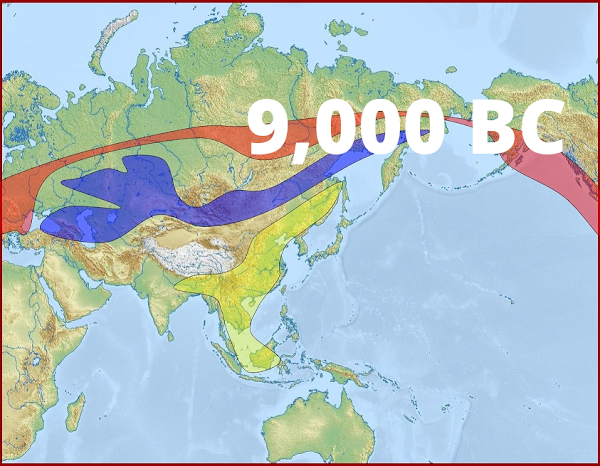 |
Base-map by Mapswire.com — Modified with Historical hypothesis by Andrea T. Pagano 9,000 BC – The Fall of the SwansThe Flood pushed people from Indochina to north and the consequences of this event arrived up to Europe, as the peoples of Central Asia broke the "Civilization of the Swamp Sailors". |
THE NAMES OF THE "SEA PEOPLES"

|
Base-map by Mapswire.com — Modified with Historical hypothesis by Andrea T. Pagano 25,000 BCThe Civilization of the Swamps and of the Coastal Sailors |

|
Photo by Đức Nguyễn from Pixabay.com — Modified with Concept by Andrea T. Pagano KA-WAKA — The Fishermen"Living on the Coasts" |
The Morphemic Analysis of words from all languages show that the "Sea" and "Coast" come from these roots:
KHAMBW (SHABA)
KHANGA (KAWA)
KWAHA (WAKA)
• KHAMB'BAHA •
"KHAMBW"("SHABA") | "KHANGA" – "KHAWA"("SHANGA") | "KWAHA" – "WAKHA"("WAKA") |
|---|---|---|
INDOEUROPEAN LANGUAGESSwedish hav "KHAMBW"Armenian tsov "KHAMBW" Nepalese samudra "KHAMBW" Divehi mudù "KHAMBW" SEMITIC LANGUAGESHebrew yam "KHAMBW"URALO-ALTAIC LANGUAGESCAUCASIAN LANGUAGESWarüigo ümi "KHAMBW"ISOLATED LANGUAGESJapanese umi "KHAMBW"INDO-PACIFIC AREASamoan sami "KHAMBW"EAST-ASIAKhmer samout "KHAMBW"BLACK AFRICALingala mbù "KHAMBW"SIBERIA AND AMERICASInuktitut imaq "KHAMBW"Nganasan dâm "KHAMBW" Cherokee amequohi "KHAMBW" Tzotzil nab "KHAMBW" Aymara lamara "KHAMBW" |
INDOEUROPEAN LANGUAGESGreek thalassa "KHAWA"Latin pontus "KHANGA" Albanian deti "KHANGA" Divehi kandu "KHANGA" SEMITIC LANGUAGESURALO-ALTAIC LANGUAGESHungarian tenger "KHANGA"East Mari teҥyz "KHANGA" Erzya inevedʹ "KHANGA" Turkish deniz "KHANGA" Chuvash tinĕs "KHANGA" Tuvinian dalaj "KHAWA" CAUCASIAN LANGUAGESGeorgian zghva "KHANGA"ISOLATED LANGUAGESBasque itsaso "KHANGA"Korean yong "KHANGA" INDO-PACIFIC AREATongan tahi "KHAWA"EAST-ASIAGiavanese segara "KHANGA"Cebuan dagat "KHANGA" Philipino dagat "KHANGA" Waray dagat "KHANGA" Thai thale "KHAWA" BLACK AFRICAChichewa nyanja "KHANGA"Ewe atsiaƒu "KHANGA" Shona gungwa "KHANGA" Hausa teku "KHANGA" Ganda enyanjja "KHANGA" SIBERIA AND AMERICASInuktitut tariuq "KHAWA"Tlingit éilʼ "KHAWA" Mapuche lafken "KHANGA" |
INDOEUROPEAN LANGUAGESLatin mare "WAKHA"Gaelic muir "WAKHA" Hittite arunas "WAKHA" Singalese muhudu "WAKHA" SEMITIC LANGUAGESArabic bahr "WAKHA"URALO-ALTAIC LANGUAGESEstonian meri "WAKHA"Carelian meri "WAKHA" Nganasan baagutə "KWAHA" Khanty tʹorəs "KWAHA" Komi saridz "KWAHA" CAUCASIAN LANGUAGESWarüigo mea "KWAHA"Lak hʹhʹiri "KWAHA" Lezghian gʹuʹl "KWAHA" ISOLATED LANGUAGESBurushashki phari "WAKHA"Japanese kai "KWAHA" Korean bada "WAKHA" Ainu atuy "KWAHA" INDO-PACIFIC AREAKotava bira "KWAHA"Narom mé "KWAHA" Tahitian miti "KWAHA" Maori moana "KWAHA" EAST-ASIAChinese hǎi "KWAHA"Malaysian lau "KWAHA" Vietnamese biển "KWAHA" BLACK AFRICASIBERIA AND AMERICASKet mora "WAKHA"Yakut bajğal "KWAHA" Dakota ble "KWAHA" Kumiai _ʼehaasilly "WAKHA" Hopi paatuwaqatsi "WAKHA" Nahuatl huēyātl "KWAHA" Guarana para "KWAHA" |

|
Photo by Valéria Rodrigues Valéria from Pixabay.com — Modified with Concept by Andrea T. Pagano WAHA — The Coast"The Bright Path" |
"KHAMBW"("SHABA") |
"KHANGA" – "KHAWA"("SHANGA") |
"KWAHA" – "WAKHA"("WAKA") |
|---|---|---|
INDOEUROPEAN LANGUAGESSpanish ribeira "KHAMBW"SEMITIC LANGUAGESURALO-ALTAIC LANGUAGESEstonian liiv "KHAMBW"Azeri çimərlik "KHAMBW" Turkish kumsal "KHAMBW" CAUCASIAN LANGUAGESISOLATED LANGUAGESINDO-PACIFIC AREAEAST-ASIAHmong puam "KHAMBW"Burmese kamhkyay "KHAMBW" Cebuan baybayon "KHAMBW" BLACK AFRICAChichewa gombe "KHAMBW"Chichewa kumtunda "KHAMBW" Sesotho lebōpo "KHAMBW" Zulu ibhishi "KHAMBW" SIBERIA AND AMERICAS |
INDOEUROPEAN LANGUAGESLatin litus "KHANGA"English shore "KHANGA" Hindi tat "KHANGA" Armenian logap "KHANGA" SEMITIC LANGUAGESArabic shatt "KHANGA"URALO-ALTAIC LANGUAGESEstonian rand "KHANGA"CAUCASIAN LANGUAGESAdyghe tafe "KHANGA"Kazakh jağajay "KHANGA" ISOLATED LANGUAGESBasque hondartza "KHANGA"INDO-PACIFIC AREAHawaiian kahakai "KHAWA"EAST-ASIAChinese hǎi "KHANGA"Khmer chhner "KHANGA" Thai chāyh̄ād "KHANGA" Lao hadsai "KHANGA" Indonesian pantai "KHANGA" BLACK AFRICASIBERIA AND AMERICAS |
INDOEUROPEAN LANGUAGESEnglish beach "KWAHA"Spanish playa "KWAHA" Welsh traeth "KWAHA" Norwegian strand "KWAHA" Polish brzeg "KWAHA" Lithuanian pajūris "KWAHA" Kurdish berav "KWAHA" SEMITIC LANGUAGESArabic sahel "KWAHA"Hebrew khohf "KWAHA" URALO-ALTAIC LANGUAGESCAUCASIAN LANGUAGESISOLATED LANGUAGESKorean badasga "WAKHA"Japanese oka "WAKHA" INDO-PACIFIC AREAMaori tahatai "KHAWA"Samoan matafaga "WAKHA" EAST-ASIASundanese basisir "WAKHA"BLACK AFRICAIgbo osimiri "WAKHA"Swahili pwani "KWAHA" SIBERIA AND AMERICAS |
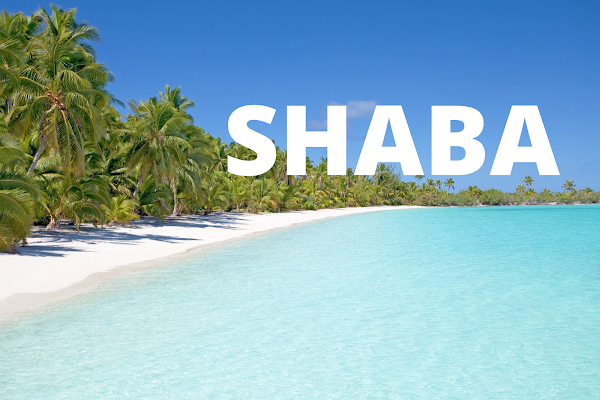
|
Photo by Pexels from Pixabay.com — Modified with Concept by Andrea T. Pagano KHAMBWA — The Coast"The Dry Ground" |
Our ancestors preferred to walk on the coasts because the beaches were a safer and also nice place.
INDIAN OCEAN |
Mozambique (state) Tanzania (state) Kenya (state) Tana (river) Somalia (state) Yemen (state) Oman (state) India (state) Tungabadra (river) Cambodia Sumatra (region) Java (island) Sumba (island) |
PACIFIC OCEAN |
Tonchino (region) China (state) Japan (state) Siberia (region) Kamchatka (region) Tanana (river, Alaska) |
 | |
Base-map by Mapswire.com — Modified with Historical hypothesis by Andrea T. Pagano TANGA – "Living on the Coasts""The Safe Place" |
There is a continuous Chain of toponyms in the variants of KHAMBA and KHANGA along the Indo-Pacific coasts.

|
Base-map by Mapswire.com — Modified with Historical hypothesis by Andrea T. Pagano SHAMBA — The Nation"The Dry Ground is Our Home" |
SHAMBA-WAMBA is the earliest self-conscious human civilization, that developed along the Austral-Pacific coasts.
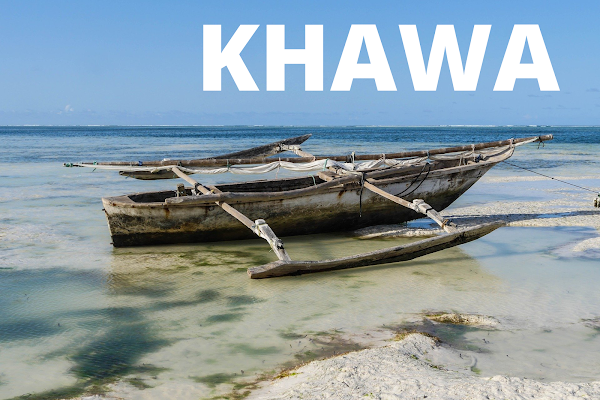
|
Photo by MonikaP from Pixabay.com — Modified with Concept by Andrea T. Pagano WAWA — The Boat"Going along a Path" |
The Names of the ancient Coastal Fishermen Tribes were similar to these forms:
SHABA-LIBU, — "SHALAMBW"
LANGA-LIBU, — "KALIBU"
AKA-WAKA, — "SHAMASH"
ANGA-LANGA, — "NGALAHA"
KHANGA-WANGA, — "WAHKHANGA"
"KHAMBW"("SHABA") |
"KHANGA" – "KHAWA"("SHANGA") |
"KWAHA" – "WAKHA"("WAKA") |
|---|---|---|
INDOEUROPEAN LANGUAGESLatin cymba "KHAMBW"Croatian čamac "KHAMBW" Greek skaphos "KHAMBW" Greek lembos "KHAMBW" Ukrainian choven "KHAMBW" SEMITIC LANGUAGESHebrew spynah "KHAMBW"URALO-ALTAIC LANGUAGESEstonian laev "KHAMBW"Turkish gemi "KHAMBW" Mongolian zavi "KHAMBW" CAUCASIAN LANGUAGESISOLATED LANGUAGESINDO-PACIFIC AREAMalagasy sambo "KHAMBW"Telugu paḍava "KHAMBW" Javanese kapal "KHAMBW" EAST-ASIABLACK AFRICASesotho sekepe "KHAMBW"Sesotho mkhombeni "KHAMBW" Zulu isikebhe "KHAMBW" SIBERIA AND AMERICAS |
INDOEUROPEAN LANGUAGESLatin navis "NGAWA"Bengali nauka "KHANGA" Armenian navak "NGAWA" Albanian lundër "KHWNGA" Bulgarian lodka "KHWNGA" Latvian kuģis "KHWNGA" Nepali duṅgā "KHWNGA" SEMITIC LANGUAGESArabic karib "NKARI"Amharic jeliba "NKHUWU" Soomali doonta "KHAMBA" Maltese dgħajsa "KHANGA" Hebrew anyah "KHWNGA" URALO-ALTAIC LANGUAGESHungarian csónak "KHWNGA"Turkish tekne "KHANGA" Turkish sandal "KHWNGA" Azeri qayıq "KHAWU" CAUCASIAN LANGUAGESISOLATED LANGUAGESBasque untzi "KHWNGA"Japanese fune "KHANGA" INDO-PACIFIC AREAKannada dōṇi "KHWNGA"EAST-ASIAChinese chuán "KHWANGA"Filipino bangka "KHWNGA" Indonesian sampal "KHWAMBA" Vietnamese thuyền "KHWANGA" Cebuan sakayan "KHANGA" Lao heu "NGWUU" |
INDOEUROPEAN LANGUAGESDanish båt "KWAHA"Greek ploio "KWAHA" SEMITIC LANGUAGESURALO-ALTAIC LANGUAGESEstonian paat "KWAHA"Finnish vene "KWAHA" Hungarian hajó "KWAHA" CAUCASIAN LANGUAGESISOLATED LANGUAGESKorean bae "KWAHA"INDO-PACIFIC AREATamil paṭaku "KWAHA"Hawaiian waha "WAKHA" Hawaiian moku "KHUMBA" Maori poti "KWAHA" Samoan vaa "WAKHA" EAST-ASIABurmese lhaay "KWAHA"Hmong nkoj "KHWNGA" Khmer touk "KWUH" Thai reụ̄x "NKURU" BLACK AFRICAYoruba ọkọ "KHUNG"Swahili ngalawa "NGWAHA" Swahili mashua "NKWAHA" SIBERIA AND AMERICAS |
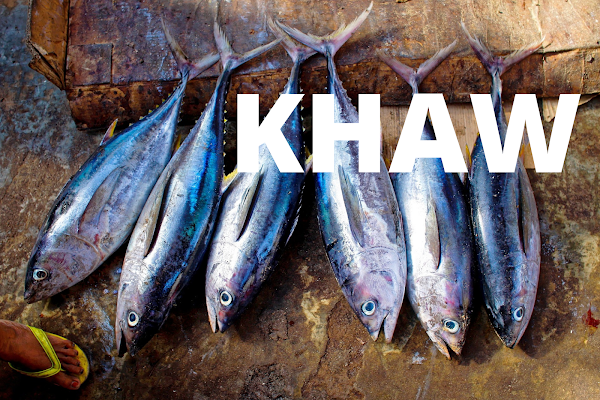
|
Image by Kevin Phillips from Pixabay.com — Modified with Concept by Andrea T. Pagano KWAHU — The Fish"What we have Captured" |
"KHAMBW"("SHABA") |
"KHANGA" – "KHAWA"("SHANGA") |
"KWAHA" – "WAKHA"("WAKA") |
|---|---|---|
INDOEUROPEAN LANGUAGESLatvian zivis "KHAMBW"Belarussian ryba "KHAMBW" SEMITIC LANGUAGESURALO-ALTAIC LANGUAGESCAUCASIAN LANGUAGESISOLATED LANGUAGESBurushaski chomo "KHAMBW"INDO-PACIFIC AREATelugu cēpalu "KHAMBW"EAST-ASIABLACK AFRICAChichewa nsomba "KHAMBW"Shona hove "KHAMBW" Swahili samaki "KHAMBW" SIBERIA AND AMERICAS |
INDOEUROPEAN LANGUAGESArmenian dzuk "KHANGA"SEMITIC LANGUAGESHebrew dahg "KHANGA"Hebrew ladvig "KHANGA" Soomali kaluun "KHAWA" URALO-ALTAIC LANGUAGESHungarian hal "KHAWA"Estonian kala "KHAWA" Udmurt čoryg "KHANGA" CAUCASIAN LANGUAGESGeorgian tevzi "KHANGA"ISOLATED LANGUAGESWarüigo sakna "KHANGA"Japanese sakana "KHANGA" Korean saengseon "KHANGA" Korean mulgogi "KHANGA" Mongol zagas "KHANGA" INDO-PACIFIC AREAEAST-ASIAHmong ntses "KHANGA"BLACK AFRICAXhosa intlanzi "KHANGA"Hausa kifi "KHAWA" SIBERIA AND AMERICASInuktitut iqaluk "KHAWA" |
INDOEUROPEAN LANGUAGESLatin piscis "KWAHA"Greek ixtos "WAKHA" Greek psari "KWAHA" Afrikaans vis "WAKHA" Irish iasc "WAKHA" Albanian peshk "KWAHA" Kurdish masî "WAKHA" Tadjiki mohī "WAKHA" Singalese māḷu "WAKHA" Bengali mācha "WAKHA" SEMITIC LANGUAGESArabic smak "KWAHA"Amharic ‘asa "WAKHA" Maltese ħut "WAKHA" URALO-ALTAIC LANGUAGESAzeri balıq "KWAHA"CAUCASIAN LANGUAGESISOLATED LANGUAGESBasque arrain "WAKHA"INDO-PACIFIC AREASamoan iʻa "WAKHA"Maori ika "WAKHA" Hawaiian i'a "WAKHA" Malagasy trondro "KWAHA" Malayalam matsyaṁ "WAKHA" Tamil mīṉ "WAKHA" Kannada mīnu "WAKHA" EAST-ASIAChinese yú "KWAHA"Burmese ngarr "KWAHA" Lao pa "KWAHA" Khmer trei "KWAHA" Thai plā "KWAHA" Indonesian ikan "KWAHA" Javanese iwak "KWAHA" Vietnamese cá "KWAHA" Sundanese lauk "WAKHA" Cebuan isda "WAKHA" BLACK AFRICAYoruba eja "WAKHA"Tswana tlhapi "KWAHA" Sesotho tlhapi "KWAHA" Igbo azụ "WAKHA" SIBERIA AND AMERICAS |

|
Photo by sabri ismail from Pixabay.com — Modified with Concept by Andrea T. Pagano KHAWA — The Golden Horizon"The Seaside is a Beautiful Place to Live" |
KHAWA or KHAMBA are the most common linguistic roots for "Beautiful", "White, Yellow" and for "Flat, Low".
This means that they were the ancient words to indicate "the Coastal Environment"
Beautiful
|
White / Yellow
|
Low / Flat
|
|
Norwegian vakker "WAKHA" Norwegian fin "KHANGA" Greek oraios "WAKHA" Ancient Greek kalos "KHAWA" Hungarian szép "KHAMBW" Estonian kaunis "KHAWA" Mongolian saikhan "KHANGA" Sundanese geulis "KWAHA" Japanese kawaii "KHAWA" |
Greek leukos "white" "WAKHA" Danish hvit "white" "KWAHA" German gelb "yellow" "KWAHA" Persian zard "yellow" "KHAWA" Arabic beida "white" "KWAHA" Arabic ambar "yellow" "KHAMBW" Turkish ak "white" "WAKHA" Turkish sary "yellow" "KHAWA" Mongolian tsagaan "white" "KHANGA" Chinese bai "white" "KWAHA" Chinese huáng "yellow" "KHWA" Thai luang "yellow" "KHANGA" |
Greek paidos "child" "KWAHA" English pan "lowland" "KHANGA" Norwegian sump "swamp" "KHAMBW" Norwegian lav "below" "KHAMBW" Russian step "flat" "KHAMBW" Malesian padang "plain" "WAKHA" |

|
Image by Наталья Коллегова from Pixabay.com — Modified with Concept by Andrea T. Pagano AKA-BAKA — Sailing the Frozen Coasts |
When the Sailors arrived to the frozen coasts of Siberia, they called the ice as "BAKA" or "KWAHA", which mean "White".
Therefore, their names were shaped like:
NGA-NANGA
BAK-KHANGA
ASKA-BASKA
ALA-WASKA
"KHAMBW"("SHABA") |
"KHANGA" – "KHAWA"("SHANGA") |
"KWAHA" – "WAKHA"("WAKA") |
|---|---|---|
| Chinese bīng "KHANGA" |
English ice "WAKHA" Polish lód "KWAHA" Italian ghiaccio "KWAHA" |

|
The Names of the Sea Peoples |
The "Sea Peoples" of the Bronze-Age Mediterranean have been used as a starting point for the comparative linguistic method, which is not very scientific, because you could say that the Denyen were Danes, the Peleset were Poles and why not, the Libu were Lapps.
The only difference is that the author decided and use ALL the words from ALL the languages.
The Ancient Egyptians wrote down the names of the Sea Peoples in a double-form – such as "Wesh-esh" or "Ek-wesh", just like some place-names such as Ouagadogou (Burkina-Faso), Bangalore (Karnataka), Chimborazo (Ecuador) or Frankfurt (Germany); and you may see that some elements, such as "WESH", repeat accross more than one name.
What did these morphemes mean?
Was that their birthplace? maybe it meant "Pirates"? or was it their Totemic animal?
| The Sea Peoples | first Morpheme | second Morpheme |
|---|---|---|
| Denyen | "KHANGA" | "KHANGA" |
| Eqwesh | "WAKHA" | "WAKHA" |
| Libu | "SHABA" | |
| Lukka | "WAKHA" | |
| Peleset | "BURU" | "SHAKA" |
| Sheqelesh | "SHAKA" | "SHAKA" |
| Sherden | "SHANGA" / "KURU" | "KHANGA" |
| Tersha | "SHANGA" / "KURU" | "SHAKA" |
| Tjeker | "SHAKA" | "KURU" |
| Weshesh | "WAKHA" | "WAKHA" |
"SHABA" — "SHANGA" — "WAKHA"
|
||
This survey actually started as a way to show that the name "Lapp" (the Saami of Scandinavia) is not necessarily offensive. Because very similar to "Saami-Lapp", it's the name of peoples Kubu-Lubu from the Sumatra island, meaning "Ground People — Sea People"; but doesn't liiv mean "coast" in Estonian? So what linguistic relation makes such, that Lybia and Lebanon would mean "Coastal Land"? etc...
That's how the author had the idea of the Coastal chain of toponyms based on the phoneme "SHAMBA"; and everything else came accordingly. In particular, the Phonemes that make up this work can all be found in the region of Indonesia.
ANDA-LANDA

|
Image by Free-Photos from Pixabay.com — Modified with Concept by Andrea T. Pagano WANDA — Giant Waves |
Living on the Austral Coasts had just a problem: there were frequent seaquakes, producing waves as tall as hills.
In December 2004, the whole Indian ocean was struck by a massive tsunami leaving thousand of deads. However, the natives of the Andamanes reported that they could flee on the hills as soon as they saw the coast line falling back in the sea. They had been known for millennia that this was the sign of a giant wave coming.
Waves like "Small Hills" |
Hills like "Giant Waves" |
|---|---|
INDOEUROPEANAlbanian valë "WAKHA"German welle "WAKHA" Greek kýma "KHAMBW" Hindi lahar "KHANGA" Latin unda "KHANGA" Tajiki dandon "KHANGA" Welsh ton "KHANGA" Norwegian bølge "WAKHA" SEMITICHebraic gel "KWAHA"Maltese mewġa "WAKHA" URALO-ALTAICEstonian laine "KHANGA"Finnish aalto "KHANGA" Hungarian hullám "KWAHA" Mongolian dolgio "KHANGA" Turkish dalga "KHANGA" CAUCASIANISOLATEDJapanese nami "KHAMBW"Corean weibeu "KHAMBW" INDO-PACIFICCebuan balod "WAKHA"Filipino alon "KWAHA" Javanese gelombang "KHAMBW" Kannada ale "KHANGA" Maori ngaru "KWAHA" Malagasy ahevaheva "KHAMBW" Samoan galu "KWAHA" Sundanese ombak "KHAMBW" Telugu vēv "KWAHA" EAST-ASIAChinese bō "KHAWA"Khmer rolok "WAKHA" Lao khun "KHANGA" Thai khlụ̄̀n "KWAHA" BLACK-AFRICAChichewa kuwomba "KHAMBW"Chichewa funde "KHANGA" Hausa kalawa "KWAHA" Sesotho leqhubu "KHAMBW" Swahili wimbi "KHAMBW" Yoruba igbi "KHAMBW" SIBERIA & AMERICAS |
INDOEUROPEANEnglish law "KHAMBW"SEMITICArabic tell "KWAHA"Amazigh tassili "KWAHA" Hebraic ramat "KHAMBW" Somali daba "KHAMBW" URALO-ALTAICTurkish yayla "KWAHA"Turkish tepe "KHAMBW" CAUCASIANISOLATEDINDO-PACIFICEAST-ASIAThai kao "KWAHA"BLACK-AFRICASIBERIA & AMERICAS |

|
Image by jackhappy from Pixabay.com — Modified with Concept by Andrea T. Pagano AGHA-BAGHA — Up and Down"Living on the Sea, and Taking Refuge on the Hills" |
The Coastal Sailors knew that it always was better to set a camp close to some high hills, because you could need to run immediately away from the Sea.
This was the main feature of the Civilization KHANGA-WANGA which literaly means
"Going Up and Down"
Other possible names are TALLA-WALLA or ANDA-LANDA – that is, we found the legendary Atlantis.
"High" |
"Protection" |
|---|---|
INDOEUROPEANEnglish tall "KWAHA"English top "KHAMBW" Latin altus "KWAHA" Russian vyšnij "WAKHA" SEMITICURALO-ALTAICMongolian tengri "KHANGA"CAUCASIANISOLATEDJapanese kami "KHAMBW"INDO-PACIFICEAST-ASIATibetan to "KWAHA"Tibetan gong "KHANGA" Thai dong "KHANGA" BLACK-AFRICASIBERIA & AMERICAS |
INDOEUROPEANEnglish den "KHANGA"Italiano tana "KHANGA" Swedish säker "KHANGA" SEMITICURALO-ALTAICCAUCASIANISOLATEDINDO-PACIFICEAST-ASIABLACK-AFRICASIBERIA & AMERICAS |
 |
|
Base-map by Mapswire.com — Modified with Historical hypothesis by Andrea T. Pagano ANGA-LANGA — The Civilization of the Seaquakes |
Therefore, the Civilization SHAMBA-WAMBA and Atlantis refer to the same fact.
THE SALMONS

|
Image by Sasin Tipchai from Pixabay.com SHAH! or TAH! — The Hunters"Catching a Prey" |
All this survey is based on Emotional Phonemes.
This means that words were born as Emotions, associated to a particulat context. One of the most important was SHAKA or SHANGA, the act of "Catching a Prey", that became the main word to say
— SHAKA: "Hunting with a Throwing Weapon"
which was extended to the concept of "Going Along a Straight Line", giving name to places such as "Beach" and "River" as "The Path for Hunting".
The possible finding of Resources in a certain place, therefore gave those things their names.

|
Image by Chamaiporn Kitina from Pixabay.com — Modified with Concept by Andrea T. Pagano KATAH — The Forest along the Shore"The Hunting Place" |
While they marched along the coasts, the people used to go hunting in the nearby forests.
So SHAKA and KATAH meant "The Place for Hunting".
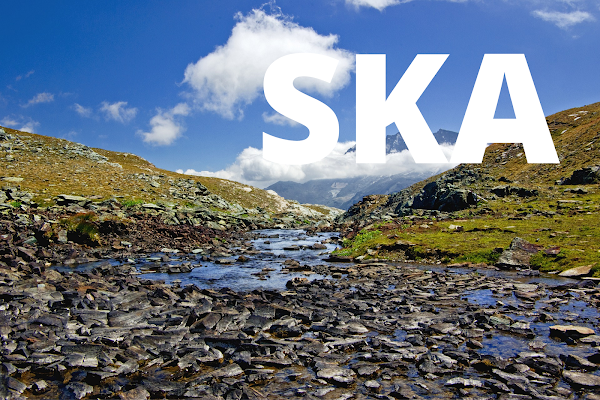
|
Image by Sergio Cerrato from Pixabay.com — Modified with Concept by Andrea T. Pagano SHANGA — The Source"Tracing the Rivers Upstream" |
However the Hunters also wanted to explore, and used to trace back rivers to find Water and Food.
Moreover, Rivers were a Safe Path, hence River itself, in its being "The Path to the Source", became the base for the concepts such as
— NGA-SHANGA, — SHA-LANGA: "Climbing up the Hill"
| Throwing Weapon |
Bantu shongo "throwing knife" Greek lithos "stone" Polish kamień "stone" German lanze "spear" |
| "Going along a Straight Line" |
Chinese ling "chain of mountains" Coreano yoma "chain of mountains" Mongolo alin' "chain of mountains" Arabo hijaz "chain of mountains" Hindi vala "chain of mountains" Inglese ridge "chain of mountains" Inglese chain "chain of mountains" |
| Going Hunting |
Norwegian søke "to search" "KWANGA" Norwegian jage "to hunt" "KWANGA" Swedish vandra "to wander" "KWANGA" Warüigo ikü "to go" "KWANGA" Japanese iku "to go" "KWANGA" |
| Going along a Path |
Arabic shatt "sea, estuary" Norwegian strand "beach" * Latin strata "street " |
river names with radical
SHANGA |
Kwango - Congo Gange - India Tanana - Alaska |
river names with radical
SHA-LANGA |
Salonga - Congo Lulonga - Congo Selenga - Mongolia Selemdzha - Mongolia |
"Water" | "River", "Valley" | "Mountain" |
|---|---|---|
INDOEUROPEANLatin humus "wet"Spanish agua "water" SEMITICURALO-ALTAICCAUCASIANISOLATEDAinu wakka "water"INDO-PACIFICMalagasy rano "water"EAST-ASIAChinese wa "wet region"BLACK-AFRICASIBERIA & AMERICAS |
INDOEUROPEANEnglish dale "valley"French rivière "river" Hindi nadi "river" Hindi ganga "river" Spanish comba "conca" SEMITICArabic uadi "valley"Somali uebi "river" URALO-ALTAICTurkish suyu "river"Turkish ozen "river" Turkish chay "river" CAUCASIANISOLATEDCorean kang "river"Japanese kawa "river" INDO-PACIFICMalesian sungai "river"Malesian batang "river" EAST-ASIAChinese he "river"Chinese yuan "river" Chinese jiang"river" Thai pak "estuary" Thai nam "river" Thai lam "river" Thai ea"river" Tibetan tsangpo "river" Tibetan rong "valley" Tibetan kha"valley" BLACK-AFRICASIBERIA & AMERICASAmerindian pará "river" |
INDOEUROPEANHindi ghat "mount"Hindi betta "mount" Hindi dhar "mount" Portuguese penha "peak" Russian pik "peak" SEMITICAmharic emba "mount"Arabic jabal "mount" Berber adrar "mount" URALO-ALTAICTurkish tagh "mountain"CAUCASIANISOLATEDJapanese fuji "mount"Japanese dake "mount" Japanese zan "mount" INDO-PACIFICMalesian kong "mountain"EAST-ASIAChinese feng "mountain"Chinese ding "mountain" Chinese shan "mountain" Thai phanom "mountain" Thai khao "mountain" Tibetan gongar "mount" BLACK-AFRICASIBERIA & AMERICAS |

|
Image by Walter Bieck from Pixabay.com — Modified with Concept by Andrea T. Pagano SHAMBA — The Swamps"Hunting Place" |
When the Coastal Sailors crossed some low mountains of Siberia and entered the Lena Valley, they found huge alluvial marshes, which they called "SHABA" because this environment was "a kind of Sea
— SHABA: "The Marshy bottom of the Valley"
Here they found a lot of fish and birds to hunt, and kept on the exploration inside Siberia.
"KHAMBW"("SHABA") |
"KHANGA" – "KHAWA"("SHANGA") |
"KWAHA" – "WAKHA"("WAKA") |
|---|---|---|
Norwegian sump "SHAMBW" |
English marsh "WAKHA" |

|
|
Base-map by Mapswire.com — Modified with Historical hypothesis by Andrea T. Pagano THE ICE AND SWAMPS CIVILIZATION |
This is the beginning of the "Civilization of the Salmons" – because they climbed Mountains like Salmons; and that of "the Swans" – because they floated in the marshes like Swans.
Their "Totemic animals" hide behind their names, such as:
NGA-LIBU, — ANGA-NANGA
the Karibu's and the Eels (the Cherubs e the Angels)
SHA-LAMBA, — ASKA-LASKA
the Salmons
SHABA-LIBU
the Swans
"SHABA-LIBU"The Swans |
"SHAKA-LAKA"The Salmons |
|---|---|
|
Russian lebed "LIBU" English swan "SHABA" |
German lachs "LANGA" |
THE TERMITES
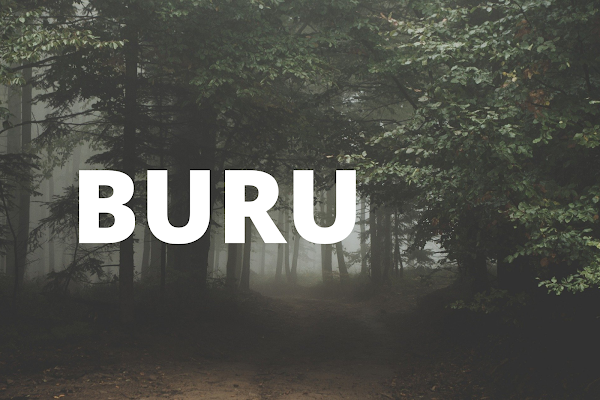
|
|
Image by Free-Photos from Pixabay.com — Modified with Concept by Andrea T. Pagano BURU — The Forest"Dark Cold Place" |
Now we begin the exploration of the Dark Environment.
Actually the words for "Dark Colour" – but first of all, for the feeling of Coldness and of Fear – largely belong to a set of phonemes that can be summed up as GWUHU, or simply "WUH", such as
HUMBWU — HUNGW — SKUHU — MUWU
KHUMB'BURU • KHUNG'GURU
MOGWA |
BURU |
KURU |
|---|---|---|
"MWRGU" |
"KHUMBW" |
"KHUNGW" |
KHUMBW, HMBURU(KHAMBW, SHABA)BURU |
KHUNGW, NGURU(KWANGA, SHAKA)KURU |
MBWUGW, MOGWA(KWAHA, WAKA)MOGWA |
|---|---|---|
INDOEUROPEANAlbanian pyll "GWURU"Croatian šuma "KHUMBW" French bois "GWUHU" Latin silva "KHUMBA" Russian bor "GWURU" SEMITICArabic ghaba "KHUMBA"URALO-ALTAICTurkish orman "GHURWU"CAUCASIANAbkhazian abna "KHWAMBA"ISOLATEDCorean sup "KHUMBW"Japanese mori "GWURU" INDO-PACIFICFilipino gubat "KHWAMBA"Thai pā mị̂ "GWUHU" BLACK-AFRICASesotho moru "GWURU"SIBERIA & AMERICASYukaghir jo:bi: "KHUMBW" |
INDOEUROPEANBreton koad "KHUNGA"English grove "NGWURU" English wood "NGUHU" Greek dasos "KHWNGA" Italian bosco "KUNGKU" Kurdish daristan "GWARA" Polish las "NGWAH" Portuguese catinga "NSKWAA" Norwegian skog "NSKUHU" SEMITICURALO-ALTAICHungarian erdő "KHUNGU"Turkmen tokaý "KHWANGA" CAUCASIANISOLATEDAinu ni "tree" "HNGWA"INDO-PACIFICChinese lín "NGWUHU"Hawaiian ululaau "GWALA" Maori ngahere "NGWUHA" Vietnamese rừng "KHUNG" BLACK-AFRICAHausa gandun "KWUNGU"Igbo ọhịa "KHUNGA" Shona sango "KHUNGA" Somali kaynta "KHUNGA" SIBERIA & AMERICASChukchi uttət "KHUNGA"Koryak umkən "KHUMGA" Itelmen u' "tree" "NGWUHU" |
INDOEUROPEANGerman wald "KWANGA"Lithuanian miškas "MUNGA" Spanish chaco "NGWAHA" Spanish mato "GWAHA" SEMITICURALO-ALTAICAzerbaijani meşə "KHUNGA"Estonian mets "NGWAHA" CAUCASIANISOLATEDBasque baso "GWAHA"Nivkh pal "GWUHA" INDO-PACIFICCebuano kalasangan "NGWAHA"Indonesian hutan "KHWAHA" Javanese alas "GWAHA" Malagasy ala "GWAHA" Malayalam vanaṁ "GWAHA" Samoan togavao "KHWANGA" Sundanese leuweung "NGWAHA" Telugu aḍavi "KHWAHA" BLACK-AFRICAChichewa nkhalango "NKWAHA"Swahili msitu "MWUKHU" SIBERIA & AMERICAS |
"Cold" |
"Fear" |
|---|---|
|
Estonian külm "KURU" Warüigo kaltyo "KURU" Samoan malulu "MOGW" |
Latin metus "MOGW" Estonian hirmu "KURU" Hungarian fél "BURU" Warüigo pör "BURU" |
Black, Dark |
Blue or Violet |
Green |
|---|---|---|
INDOEUROPEANEnglish dusk "NSKUWU"French noir "NGURU" French sombre "KHUMBRU" German schwarz "NSKUWU" Hindi kala "KWAHA" Italian scuro "NSKUWU" Russian cjernyj "NSKUWU" Danish sort "NSKUWU" SEMITICArabic aswad "NSKWAHA"Amharic ṭɛqur "NSKUWU" URALO-ALTAICHungarian fekete "KWAHA"Udmurt s’öd "SKUHU" Mongolian hara "KWAHA" CAUCASIANChechen ‘ärža "NGURHA"Georgian shavi "KHAMBA" ISOLATEDJapanese kuro "NKURU"Burushaski mʌtum "KHUMBW" Basque beltz "KWAHA" Warüigo tenbe "KHUMBW" INDO-PACIFICKannada kappu "KHUMBW"Malagasy mainty "MUNGW" Maori mangu "MUNGW" Tuvaluan uli "GWURU" EAST ASIAMandarin hēi "NGWAHA"Vietnamese đen "KHONG" BLACK AFRICAGhulfan úri "BURU"Igbo oji "GWUHU" SIBERIA & AMERICASManchu sahaliyan "SKWAHA"Aleut locha "GWULHA Alabama qaxchikdax̂ "KWANGHA" Nganasan heŋkə "KHUNGA" Nahuatl tliltic "GWULHU" Otomi mboi "KHUMBW" |
INDOEUROPEANAfricaans blaauw "GWULU"Farsi banafš "KHWAMBA" German violett "BURU" Hindi nil "NGURU" Irish corcra "NKURU" Lithuanian mėlyna "GWULMA" Welsh glas "NKWAHA" Persian ābi "KWAMBA" Sinhala dham "KWAMB" SEMITICArabic azraq "HUSKWA"URALO-ALTAICMongolian kuku "NSKUWU"Turkish mavi "NGWAHA" Uyghur sösün "NSKUHU" CAUCASIANChechen sijna "SKWAHA"Georgian lurji "NGURU" ISOLATEDBasque urdin "NGURU"Japanese buryū "BWURU" INDO-PACIFICBalinese hungu "KHUNGU"Hawaiian uliuli "GWULU" Kapampangan ubi "KHUMBW" Kiribati mawaawa "NGWAHA" Maori pāpura "MBURU" Roviana balairi "GWAHA" Thai far "GWARA" EAST-ASIACantonese làahm "KHAMBA"Vietnamese tím "KHWAMBA" BLACK-AFRICASepedi tala "KWAGHA"Wolof baxa "BWAGHA" SIBERIA & AMERICASAlabama okchakko "NKHWAKHA"Aleut chidĝix̂ "NKHUNGA" Cherokee advhalige "BWANGHA" Chinook spooh "KHUMBW" Lakota tɦóša "NKHWAKA" Mikmak ewnék "KHWUMBA" |
INDOEUROPEANAlbanian kaltër "KWURHA"Armenian ganach "KWANGA" Bengali sabuja "KHAMBA" Danish grøn "NKURU" Gilaki sebz "KHWMBW" Sinhala kola "KWULA" SEMITICArabic akh-dhar "KHWANGA"URALO-ALTAICBashkir jəšəl "HUNKSKA"Hungarian zöld "NGHURU" Turkish yeşil "HUNSKA" Udmurt vož "GHWURU" Yakut küöx "NKURU" CAUCASIANGeorgian mc’vane "KWANGA"ISOLATEDBasque berde "BURGHU"Burushaski ɪṣqʌm "KHUMBW" Japanese midori "KHUMBW" INDO-PACIFICJavanese ijem "KHUNGA"Kadazandusun Otomou "NSKUHU" EAST-ASIACantonese luhk "NLKUHU"Lao sǐ kiǎw "KWAHA" Tibetan jâang-gu "KWAHA" BLACK-AFRICAHausa algashi "NGWAHA"Igbo ọchá ndù "NGWAHA" Wolof werta "KHWANGA" Zulu -luhlaza "KHAHA" SIBERIA & AMERICASAbenaki askaskui "SKWAHA"Achumavi misuqadi "NSKUHU" Adaizan nayétsa "KWANGA" Catawba wayani "MWANGA" Chácobo niaβa "KHWANGA" Kekchi raš "NSKWAH" Manchu ñovanɣan "KHWANGA" Ocaina hiáː’o "NKHONGU" Potawatomi eškbak "KSHAMBA" Selkup patɨlʸ "NGWUHU" Shipibo šepa "SHAMBA" Tsimshian maɬiitk "KHUMBW" |

|
|
Image by Hardebeck Media from Pixabay.com — Modified with Concept by Andrea T. Pagano WURU-SHANGA — Hunting in the Forest"Tracing the River Upstream into the Forest" |
So when the River took them into the very Forest, they called themselves as
— MBURU-SHANGA: "The Hunters of the Forest"
Moreover, the River itself took name as WULU, "The Path to the Forest Hunting".
In this section, I'll therefore repeat some words from tables above such as:
— SHA-KHANGA: "Climbing a River Path"
but also introduce the distinction from the bright world of the Coasts ("KHAMBW") and the darkness of the Inland ("KHUMBW") that generate a lot of ambiguity.
| River Names |
Viluj - Siberian Russia "BURU" Volga - West Russia "BURU" Kura - Caspian sea "KURU" Moche - Peru "MOGWA" |
| Moving for Hunting |
Latin fluo "to be fluid" "BURU" Latin pleo "to make full" "BURU" |

|
|
Field: Image by Rudy and Peter Skitterians from Pixabay.com — Modified with Concept by Andrea T. Pagano WAH and WUH — Light and Darkness |
WUH! |
"Water"("Tracing the River Upstream") |
WAH! |
|---|---|---|
KHUMBWMBURU |
← Sanskrit ap "water" →
← Latin humor "liquid" → BURU-SHAH |
KHAMBWSHABA |
KHUNGWNGURU |
← Italian sangue "blood" →
← river Sankuru - Congo → KURU-SHAH |
KHANGASHAKA |
MBWUGWMOGWA |
← Sumerian a "water" →
← Polish mokry "wet" → ← Akkadian mû "water" → ← Latin maris "sea" → MOH-KHAN |
KWAKHAWAKA |

|
|
Image by Nick115 from Pixabay.com — Modified with Concept by Andrea T. Pagano MWUHU — The Forest Mountain |
MWU-KHANGA
GURU-SHANGA
BURU-SHAKA
SHAM-BURU
KHUN-GURU
— "Going towards the Mountain in the Forest"
KHUMBW, HMBURU(KHAMBW, SHABA)BURU |
KHUNGW, NGURU(KWANGA, SHAKA)KURU |
MBWUGW, MOGWA(KWAHA, WAKA)MOGWA |
|---|---|---|
INDOEUROPEANPersian kuh "KHUMB"Russian kamen' "KHWAMB" SEMITICAmharic amba "KHUMBA"Arabic gebel "KHUMBA" URALO-ALTAICCAUCASIANISOLATEDAinu nupuri "NGWURU"Japanese dake "KHWAMBA" Japanese fuji "KHUMBW" Japanese ho "NGWOH" INDO-PACIFICMalesian dolok "KHUMBW"Malesian kong "KHWOM" Thai phnom "GWOM" Tibetan ru "KHUM" Vietnamese pu "GWUH" Thai doi "KHUMB" BLACK-AFRICASIBERIA & AMERICAS |
INDOEUROPEANAfrikaans berg "NGWUR"Hindi achal "NSKWAA" Hindi betta "KHUNGA" Hindi dungar "KHUNGA" Spanish cerro "NGURU" Urdu parbat "GWARA" SEMITICBerber adrar "KWARA"Hebrew har "GWARA" Somali bur "GWUR" Somali qar "GWUR" URALO-ALTAICCAUCASIANISOLATEDCorean san "KHAN"INDO-PACIFICChinese chang "KHUNG"Malesian bukit "NGWUK" Thai khao "NKWOH" Vietnamese nui "KHUNG" BLACK-AFRICASIBERIA & AMERICASItelmen ŋejŋe "KHUNGA"Chukchi ŋej- "KHUNGA" |
INDOEUROPEANHindi dhar "GWAHA"Hindi mala "MWAH" Hindi ghat "MGWAH" Russian gora "NGWAHA" SEMITICURALO-ALTAICEstonian mägi "hill" "MWAGA"Turkish tau "NKWAHA" Turkish dag "GWAH" CAUCASIANISOLATEDNivkh pal "MBWAHA"Japanese maru "GWAHA" Japanese mine "GWUHU" INDO-PACIFICBurmese kalan "NKLAHA"Tamil gala "NGWAHA" Vietnamese dao "GWAH" BLACK-AFRICASIBERIA & AMERICASKerek ŋay "NKHWANGA" |

|
|
Image by hjrivas from Pixabay.com — Modified with Concept by Andrea T. Pagano GWURU-SHANGA — The Hard Life in the Mountains |
The Forests were a very dangerous place, which made the Hunters imagine how to use the hard materials such as Timber and Stone which in most languages are based on the phoneme GWURU or MUWU.
The darkness forced them to a better group organization, and to follow someone who had more knowledge of the place, which is the origin of structured hierarchies and the base phoneme for Hero and Saint
—"Those who chose the hard way"
Stone, Board |
Saint, Hero |
|---|---|
INDOEUROPEANEnglish stone "SHANGA"Breton men "GWUNG" Russian kamien "KHAMBW" SEMITICSomali daga "KHWANGA"URALO-ALTAICCAUCASIANISOLATEDAinu suma "GHUMBA"Nivkh paχ "KHWANGA" INDO-PACIFIC AREAMaori poari "GWAHA"EAST-ASIABLACK-AFRICASIBERIA & AMERICASYukaghir pe: "GWUMH"Chukchi wykwylgyn "GWULKW" Kerek ukkuŋa "KHUNGW" Itelmen vapk'ol "KHUMBW" |
INDOEUROPEANDanish helgen "KHUNGLA"English holy "GWUH" Greek iroas "GWURU" Latin sanctus "KHANGA" SEMITICURALO-ALTAICTurkish mazar "BWOGHA"Mongolian bogdo "HMGWHO" CAUCASIANISOLATEDINDO-PACIFIC AREAEAST-ASIABLACK-AFRICASIBERIA & AMERICAS |
 |
|
Gu, Benin: Image by Ji-Elle, CC BY-SA 3.0, via Wikimedia Commons — Modified with Concept by Andrea T. Pagano;
GWUH — The God of War"Making Traps with a Web" |
It is not hard to guess that those new technology from the Forest was also implemented in fighting for the lands, and that GWURU-SHAKA became synonym of "Warrior" increasingly in a technical sense.
"Territory" |
"War" |
|
Latin ager "WGHRA" Mongolian oron "KURU" |
Danish krig "NGWURU" |

|
Image by Götz Friedrich from Pixabay.com — Modified with Concept by Andrea T. Pagano MOHANGA — The Chief Architect"Complicated like a Forest" |
The name of the legendary king Minos and the Labyrinth are one and the same. The phoneme MOGHW explains the etymology of "King" in many languages because "They Know the Right Way inside the Darkness".
Therefore, in the Culture MBWU-SHANGA of the "Warrior-Builders", the Chief Warrior is also the "Chief Architect", as their mind is complex "like a Maze" – that is, like a Forest.
| Above All |
Hindi megha "cloud" "MOGWA" |
| At the Top of Hierarchy |
German könig "king" "KHANGA" Turkic khagan "emperor" "KHANGA" Minoan minos "emperor" "MONGWA" Swahili mungu "god" "MONGW" |
| Complex Reasonment |
Latin mens "mind" "MOGWA" Polish mózg "brain" "MOGWA" Greek máthēma "knowledge" "MOGWA" |
| Building a Protection |
Celtic magio "city" "MOGWA" English maze "labyrinth" "MOGWA" Latin moenia "walls" "MOGWA" Hindi meru "column" "MOGWA" |

|
|
Termites: Image by Herbert Bieser from Pixabay.com — Modified with Concept by Andrea T. Pagano; MURU-MOGWA — The Termites"The Hierarchical Builders"We now deeply understand the name of the Greek Myrmidons, as "the Termites – the Warriors that build Structures". Even if Homer's Iliad does not really say that the Myrmidons were "good builders", we can compare with other Aegean peoples – such as the Pelasgians and the Dardans, but also the legendary Telchines – whose construction skills were said to be impressive, and whose names actually belong to the Culture: — GWURU-KHANGA: "the Hierarchical Builders" |
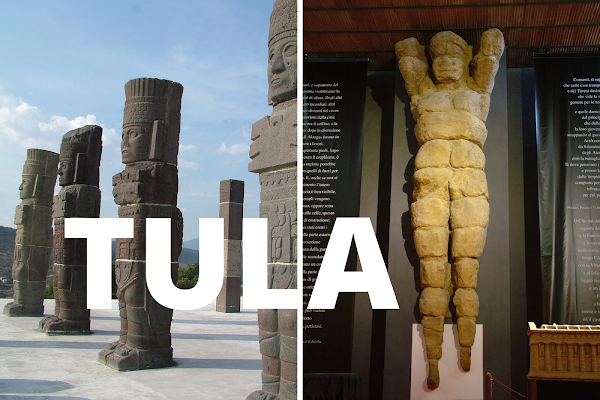 |
|
Toltechs: Image by Jorge Carlos from Pixabay.com — Modified with Concept by Andrea T. Pagano; GWULA — The WarriorTelamon, or Atlas: "The Strong Builder" |
This fantastic speech puts us in face of a long issue: is there a relation between European architecture and American architecture? Is the name of Toltecs, ancient "Warrior Builders" of Mexico, a representation of the Culture GWURU-KHANGA as well?
THE MENDELEJEV TABLE OF LINGUISTICS
 |
|
Image by TC Perch from Pixabay.com — Modified with Concept by Andrea T. Pagano ANGA and BURU — Sea and MountainThe Two main aspects of the Culture of Atlantis |
This theory may give a reasonable explanation of why American and European architectures have similarities.
Let's wrap-up before.
This survey talks about human groups walking on the shores (ANGA) and of some hunters who traced back rivers and explore the forest (BURU). During millennia, these habits became a "ethnic specialization" so that the Coastal Sailors ANGA used to spread the technology coming from the Forest groups.
As a matter of facts, the ANGA-Angels were "Those who Spread the Technology" on the shores of the Pacific Ocean – so here we explain why Atlantis was so "evoluted".
In particular, this is witnessed by the transition from makeshift solutions (— KHANGA-WANGA: "Fleeing to the top of the Hill) to structured solutions:
— GWURU-KHANGA: "The City on the Hill"
"KHANGA-WANGA"KHUMBRUHU – KHUNGWUHU – HUNSKWUHU – MWUNGWAHA |
|
|---|---|
"House, Defense structure" |
"Village, City" |
INDOEUROPEANCeltic magio "fortress" "HUMGWA"Latin menua "walls" "HUMGWA" Latin castrum "fortress" "NSKWUWU" Latin villa "house" "GWURWA" English ham "house" "KHAMBA" English fortress "castle" "GWURWA" Persian dezh "fortress" "NSKUHU" Russian ostrog "fortress" "NSKUHU" Scots cairn "tower" "HUNRGW" Hindi garh "fortress" "NGURU" SEMITICArabic bordj "fortified" "GHURGWU"Arabic dar "house" "GWUR" Arabic beit "house" "KWAHA" Arabic krak "fortress" "HRWAH" Arabic ksar "fortress" "HRKWAH" Arabic qasr "fortress" "NKRWAH" Arabic qal'at "fortress" "NLKWAH" Berber agadir "fortress" "NGRWAH" Hebrew mezad "fortress" "MSKWAHA" Egyptian pharao "pyramid" "NKWARA" URALO-ALTAICTurkish kurğan "fortress" "NKURGHU"Turkish hisar "fortress" "HUNSKWA" Turkish saray "palace" "NGHWARA" CAUCASIANISOLATEDJapanese uchi "house" "HUSKWA"Warüigo ütxi "house" "NSKUHU" INDO-PACIFIC AREAEAST-ASIAChinese cheng "walls" "KHWANG"Tibetan dzong "fort" "KHUNG" BLACK-AFRICASIBERIA & AMERICASInuktitut iglu "house" "GWULHU" |
INDOEUROPEANAfrikaans stad "city" "NSKWAH"Celtic duno "city" "NKWUWU" French bourg "city" "NGWURU" Hindi nagar "city" "KHWANGA" Hindi patam "city" "KHWANGA" Hindi gaon "city" "KWANGA" Hindi -palli "city" "KWANGA" Hindi shahr "city" "NKWARA" Latin urbs "city" "NGWURU" Persian abad "city" "GWAMBA" Persian kand "city" "KHUNGA" Russian gorod "city" "NGWURU" Russian pol "city" "GWULHU" Urdu gam "city" "KHUMB" SEMITICArabic medina "city" "MGWAHA"Hebrew kefar "village" "GWAHA" Hebrew qiryat "city" "NGWURU" Somali bulo "city" "GWULHU" URALO-ALTAICMongolian hot "city" "KHUNG"Turkish köy "village" "NKHUNG" Turkish şehir "city" "KWAHA" CAUCASIANISOLATEDCorean dong "city" "KHUNGA"INDO-PACIFIC AREAMalagasy tanana "city" "KHWANGA"Malagasy ant "place" "KHWANGA" Malaysian kampung "village" "KHUMBW" Malesian kota "city" "KHUNGA" EAST-ASIABurmese myo "city" "MBUHU"Malesian puri "city" "MBURHU" Thai buri "city" "GWURU" Thai muang "city" "KHWAMBA" Thai nakhon "city" "KHWAMBA" Thai ban "village" "KHWAMBA" Vietnamese lang "village" "KHWANGA" BLACK-AFRICABantu kwa "village" "KWAHA"SIBERIA & AMERICAS |

|
|
Image by Luciano Marelli from Pixabay.com — Modified with Concept by Andrea T. Pagano GHW, or WUH — The NeedThe Linguistic Root of Emptyness |
As humans developed an ethnic specialization for a certain environment, they used more terms based on the root WAH (related to bright or peaceful places); rather than on the root WUH (dangerous situations giving birth to a defensive habit). A step back with Etymology, and it's just animal expressions for all the terms that indicate "Lack of something" – such as "Hole", "Hunger" – therefore the words for "Circle" and "Lake" (do eagles say "I'm flying in Circles"?)
So these two phonemes "WUH" and "WAH" will mark the difference between "Dark Languages" and "Bright Languages", and allow us to detect the typical "Lifestyle" of a certain people by using some specific terms.
This system also has the consequence that I could forecast how to say "River" or "House" in a certain language if I know how to say "Man". For this reason, this survey is also called "The Mendelejev Table of Linguistics", and is a far better tool than using "people names".
 |
|
Falls: Image by James Wheeler from Pixabay.com; KHANGA and WAGHA — The essence of Ainu's and Germanics |
For example, the Table allows us to imagine the Ainu as a "People of the Littoral", hunting on rivers upstream (KHANGA) but not going deep into the woods, and not building in stone.
On the contrary, German language does not use GURU-based fundamental dictionary as expected, but WANDA-based. Surprisingly? Not really, because North-Germanic tribes are known to be "Coastal Nomads", and their original name must have been similar to "Vandal" or to "Viking" (see Winnili "Longobards"), or also to "Angles" and "Danes" (KHANGA).
| "Man" | "MAN" PHONEME |
"Water" | "Forest" | "House" |
|---|---|---|---|---|
| ||||
| Latin vir | GHUWU |
humus "wet" | silva | domus "house" murus "wall" |
| German mann | WAGHA |
wasser | wald | wand "wall" |
| ||||
| ||||
| Finnish mies | WUGHA |
vesi | metsä | mökki "cottage" |
| ||||
| ||||
| Ainu henke | KHANGA |
wakka | nitay | cise |
| ||||
| ||||
| ||||
| ||||
In terms of Evolutionary Linguistics, this survey therefore compiles a "Ranking of Language Darkness" to find what people specialized in what lifestyles, using the terms such as Man, River, Forest, Mountain
"Dark" Languagestype "WUH!" – Forest, Constructions | ||
HWMBRU |
HWNGRU, HWSKU |
MWUGU |

Image by frogfra from Pixabay.com — Modified with Concept by Andrea T. Pagano |
|
KHAMBW, SHABA |
KHANGA |
WAKA, KWAHA |
type "WAH!" – Sea, Nomadism"Bright" Languages | ||
THE GREAT FAMILY

|
KURU — The Great Family"The Group of Groups" |
The Indoeuropean legends often narrate of some prince Brothers separating and taking half of their people with them, giving the nation their own name as well.
This legend is a good reference if we study the name of the Indoeuropean tribes, since they seem they repeat a "regular pattern" where the larger group was called KURU-SHAKA (eg. "Greeks") and the smaller groups were always a blend of Mountain people NGURU and MBURU (eg. "Eolians, Dorians and Ionians").
So they were "well conscious" to be the KURUSH– "The Great Family".
Greeks ("KURUSH")
Aeolians ("GWULU")Ionians ("KHUNGU")
Dorians ("GWUHU")
Iranians ("KURUSH")
Medes ("MOGWA")Partians ("NGWARA")
Kurtii ("KURUSH")
Germanics ("KURUSH")
Buri ("GWURUSH")Danes ("KHWANGA")
Varangians ("NGURU-SHA")
Cheruskoi ("NKURU-SHA")
Quadi ("KHWANGA")
Celts ("KURUSH")
Britons ("BURUSH")Boii ("GWUHU")
Volcae ("NGWARASH")
Helvetii ("NGULHU")
Illyrians ("KURUSH")
Albani ("GWUL-KHAN")Dardani ("NGWUR-KHAN")
Mazei ("MOGWA")
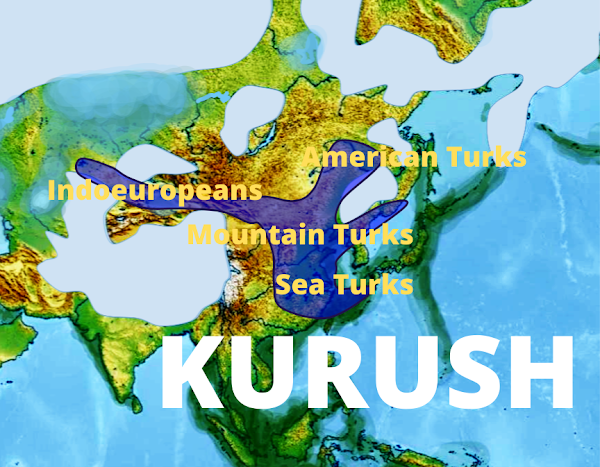 |
|
Base-map by Mapswire.com — Modified with Historical hypothesis by Andrea T. Pagano KURUSH — The Family"The Large Family" spanning from Kazakhstan to the Pacific Coasts in 25,000 BC approx. |
In Origini Indoeuropee (1962), it's reported authors (such as Adalbert Kuhn) who argue about the linguistic connections between Turkish and Indoeuropean languages that could have originated in the western region of Kazakhstan, but the real nature of this connection is unknown.
Since the phenomenon of the Regular Pattern also concerns the Turkish tribes, the common origin of the KURU-SHAKA must have developed along the forests from China to Mongolia; the Turkish tribes anyway seem they show more names like SHABA, because of the Sea before, and the Steppe afterwards – see an interpretation of Avars as KHAMBW, "People of the Steppe".
Turks ("KURUSH")
Bulgarians ("GWUR-KHANG")Kurykans ("NKURU-KHANG")
Pechenegs ("GHWA-SHANGA")
Uyghurs ("KHUN-GURU")
Bashkirs ("WUSH-KUR")
Chuvash ("GHUH-BASH")

|
|
Silo: Image by Dimitris Vetsikas from Pixabay.com — Modified with Concept by Andrea T. Pagano;
KULA — The Claw"Hold with Force" The case of "the Silos of Sillustani", culture Kolla |
Were them some KURUSH people from Mongolia?
That seems a solution, but we probably are still too far away in time to justify such a resemblance.
| People | Kolla |
Purepecha |
Olmechs |
| Place | Peru | Mexico | Mexico |
| Builders of | Chullpas towers | Pyramids | Structures in Stone |
| Etymology | "Southern People" | "People's Nation" | "People of the Rubber" |
| Phonetics | GWURU |
GWURU-MOGWA |
GWURU-MOGWA |
THE CROSS
 |
|
Image by xuuxuu from Pixabay.com — Modified with Concept by Andrea T. Pagano KHANG'GARA — The River Valley"Hunting along the Valley" |
When the MBA-LAMBA and NGA-NANGA Coastal peoples entered Siberia through the Lena valley, they called the marshes as SHABA: "The Wet-Bottom Part", while he Hills instead were called as
— KARA: "The Top-Dry Part"
KARA is a phonetic variant of KHANGA for "River Valley" , so a term like GHAN-GARA ("Going up the River") is the correct etymology for both the river Lena and the river Angara.
This also is a hint that there were no dark forests but tundra and marshes – so the Sailors kept on using "bright" words.
 |
NGARA-SHAKA — The Highlands"Going Along the Dry Part" |
NGARA-SHANGA means that the Swamp Sailors found a lot of game in the marshes, and kept on exploring them by "Moving Along the Dry Part" . In this way they arrived to Kazakhstan (in 20,000 BC) were they also met the KURU tribes coming from Mongolia.
Since the NAGA-NAGA peoples were skilled at coastal commerce since ever, they increasingly developed a net of colonies that took the name
— KARA-SHAKA: The Market, "The Meeting Point"
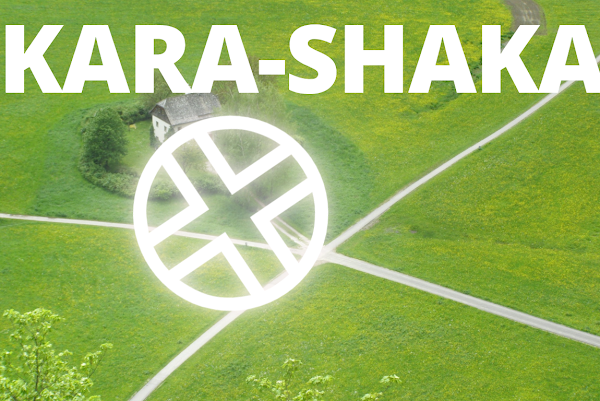 |
|
Image by rarestohanean from Pixabay.com — Modified with Concept by Andrea T. Pagano KARA-SHAKA — The Crossroad"Where the Roads Meet" |

|
The Commerce is the reason why the cities with a name in the form NGARA-SHANGA developed from Siberia and arrived into the Mediterranean as the oldest cities known such as Jericho. The Cross symbol [𓊖] is the Ancient Egyptian for "City". |
 |
Ruins in Jericho: Image by Abraham from Wikimedia Commons |
| "City / Dry Place" |
Jericho - Palestine Jerash - Jordan Chaldea = " (Dry Part of) Marshland" Jerusalem - Palestine Karasjok - Lapland Karasuk - Novosibirsk Karachi - Pakistan |
| "Trading Place" |
Italian croce " intersection" Latin cardo " reference pole" Turkish çarşı " market" |
 |
|
Base-map by Mapswire.com — Modified with Historical hypothesis by Andrea T. Pagano KARA-SHAKA — The Commerce"The Serpent-Angel"The Civilization of the Sailors of the Marshes |
If the same idea was to be applied to the american side using bright phonemes such as "MAWA" (eg. Swahili mwanga "light"), the picture would be completed by Cultures "ANGA-BIRU" or "KARA-MAWA" or "MAWANGA" etc.
 |
|
Saqqara: Image by Olaf Tausch, CC BY 3.0, via Wikimedia Commons — Modified with Concept by Andrea T. Pagano;
KARA — The Artificial Hill"The High Place" |
For example, Ancient Egyptian pharao "pyramid" ("GWARAH"). It's more likely therefore, that the most recent connection between Europe and America was due to the Commerce accross the swamps of Siberia.
 |
|
Base-map by Mapswire.com — Modified with Historical hypothesis by Andrea T. Pagano 9,000 BC — The Fall of the Angels |
This survey wanted to show that the name of Saami-Lapp is a key to imagine the earliest globalization during the Ice Ages.
Thanks for reading.
ATP
- Get link
- X
- Other Apps
Comments